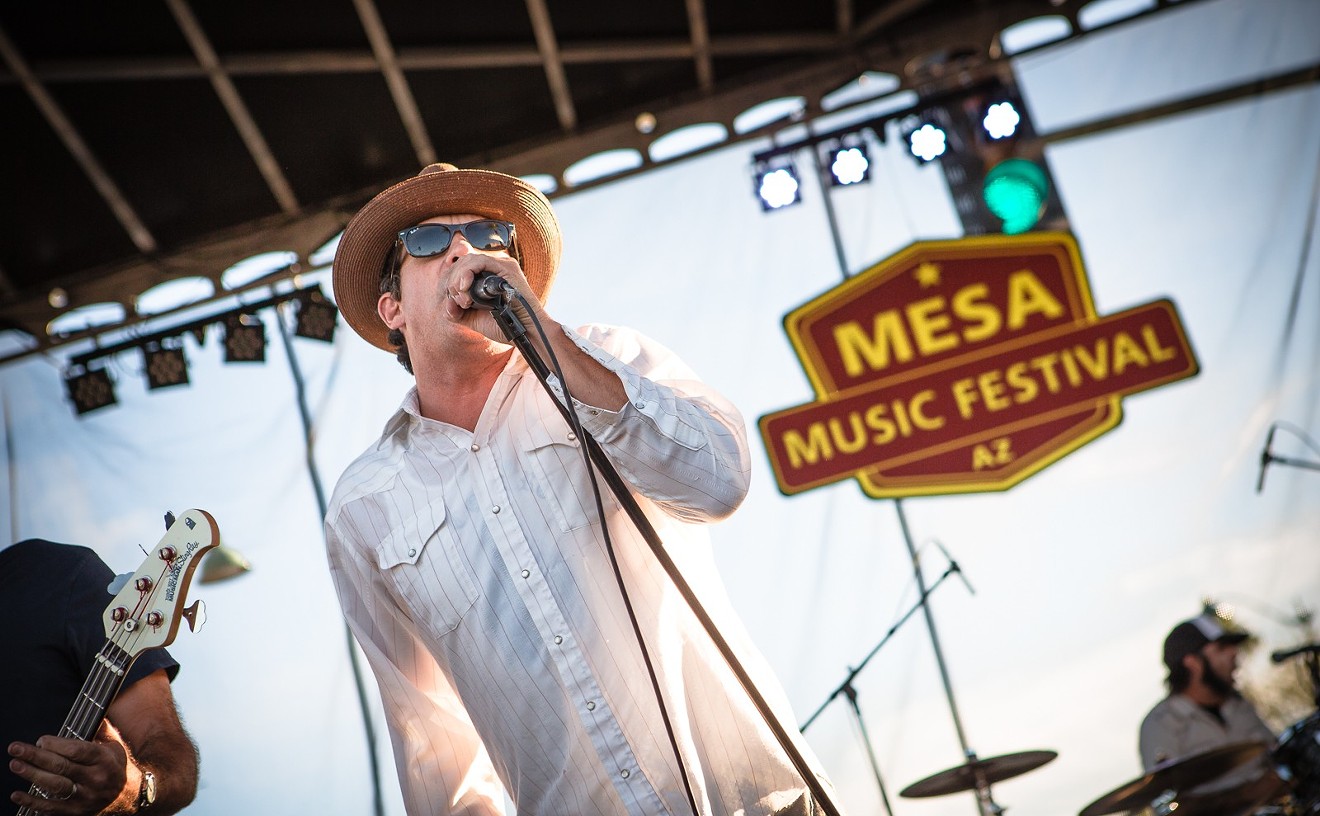Happy New Year, Phoenix! What, you've already broken all your resolutions? Yeah, us too. But we're bouncing back with some inspiration. Whether you've been considering a new hair style or a new kitchen project, we're here to help with Project PHX, our annual "how to" guide. Step into Pane Bianco's kitchen to learn how to pull mozzarella. Or brew beer, crochet dread locks, learn how to build an electric guitar and make a screen print. Five local experts are here to guide you. Today: Jim Prater builds an electric guitar.
Jim Prater's path to guitar-making is, perhaps unsurprisingly, pretty rock 'n' roll.
The Illinois native graduated from college and ran a couple of small businesses in the Champaign-Urbana area, but he was unhappy with his work. He wanted a change of scenery. So at age 30, he quit. His new career? He wanted to learn to make guitars.
Though he'd never been to Arizona before, Prater applied to the Roberto-Venn School of Luthiery in Phoenix because he had a gut feeling that it was the right fit. The renowned school has been around since 1972, and it's one of the few luthiery programs that's accredited.
"I was really nervous about the whole thing," Prater says on a dreary December afternoon at Roberto-Venn, housed in an unassuming squat brown building with bare concrete floors on Grand Avenue. He's dressed casually in a hoodie and jeans, with a blue bandanna tied over his long, dark hair, which is secured in a loose, low bun.
He's a woodworker in a warehouse filled with options for creativity -- and his excitement about those possibilities is palpable. An entire room is stocked with varieties of wood, strings, and hardware, while another houses recently painted and lacquered guitar bodies, and one is humidity-controlled to keep in-progress instruments pliable.
People from around the world apply to attend the school's intensive educational program, which covers the construction of both electric and acoustic guitars, as well as repair work, over a five-month period.
Five years later, he's an instructor at the school, two guitars that he made are on exhibit at the Musical Instrument Museum in North Phoenix, and he works with students to secure post-graduation jobs at companies including Fender and Gibson.
Prater remembers his first day at Roberto-Venn, back when the school was located on 16th Street. After a tools seminar, students quickly move on to building fretboards and guitar necks. "We don't waste a whole lot of time," he says with a laugh.
The first guitar he ever made was an electric, inspired stylistically by master luthier Paul Reed Smith, whose players include Carlos Santana and Ted Nugent. The instrument's covered in mother of pearl and has a couple of humbuckers (electric pickups designed to reduce buzzing), as well as mother-of-pearl inlay along the fretboard. He jokes that it skirts the line between hyper-detailed and busy. By contrast, Prater's first acoustic was an orchestra model crafted from spruce and bubinga in a more classic design.
It's a mathematically involved process, Prater says, and it all begins with design. Before any hands-on building takes place, a guitar maker needs to draft a technical drawing that fully realizes the project down to each and every measurement. That means basic, but crucial, structural elements must be accounted for, particularly plotting the instrument's center line, which runs from the nut, which holds strings in place where the neck and headstock meet, to the bridge, which holds the strings in place on the opposite side of and over the fretboard.
Once the technical aspects are finalized, it's all about getting creative -- especially if the guitar is electric. "You don't have to stick to any specific shape," Prater says of designing electric guitars, "because the bulk of the sound is based on the pickups."
Then you choose hardware elements, including pickups, and begin shaping a block of wood to the design's specifications. That requires the use of more than 25 different hand tools and at least a dozen power tools, Prater says. Once the wood is ready, sanded, and assembled, then the finishing process begins. It involves fret work, assembling the hardware and soldering pickups, and tweaking the strings to create the best possible action, which is affected by the distance between the strings and the fretboard.
All in all, Prater says, the process can take about three and a half weeks for a professional. Of course, the more you dig into a particular style and the more ornate the guitar, the more time goes into the building.
Prater's always got something in the works -- in between lectures, hands-on work, and demonstrations, that is.
"I'll draw something up and go do it," Prater says. "Sometimes you get an idea and have to put it down [on paper]."
From room to room, he points out his own works in progress, reaching to an overhead shelf to show off an acoustic he's collaborating on with other teachers and opening a black case to reveal an almost-complete electric guitar whose robust curves are contrasted with sharp, pointed angles.
For him, building guitars is about creative fulfillment and helping others learn the craft. It's different putting energy into something you're passionate about, he says. He's happy.
How to Build an Electric Guitar
Sketch: Draft a scale drawing of your guitar and pay close attention to proportions and measurements. Because it's an electric guitar and the bulk of the sound will come from the pickups, you can get creative with the instrument's shape.
Design: Select the finishings for your guitar. Pick out types of wood for the guitar's neck, body, and fretboard. Choose pickups, tuners, knobs, and other assorted hardware.
Tools: You'll need an array of power and hand tools at your disposal throughout the building process, including a jigsaw, drills, a soldering iron, and a sander.
Woodwork: You'll begin with a block of solid wood for the guitar's body and draw out and measure where to cut to create the shape of the instrument, as well as where to create cavities for electronic components. Shape the head and neck, too, and then assemble the wood elements using glue.
Paint: Once the wood elements are assembled and the glue has dried, you can paint and/or stain the guitar. Let it completely dry before moving on to the next step.
Finish: Add the electrical components and frets, and assemble the hardware. String the guitar and tweak them as needed to achieve the best action (the distance between the strings and the board) you can create.











